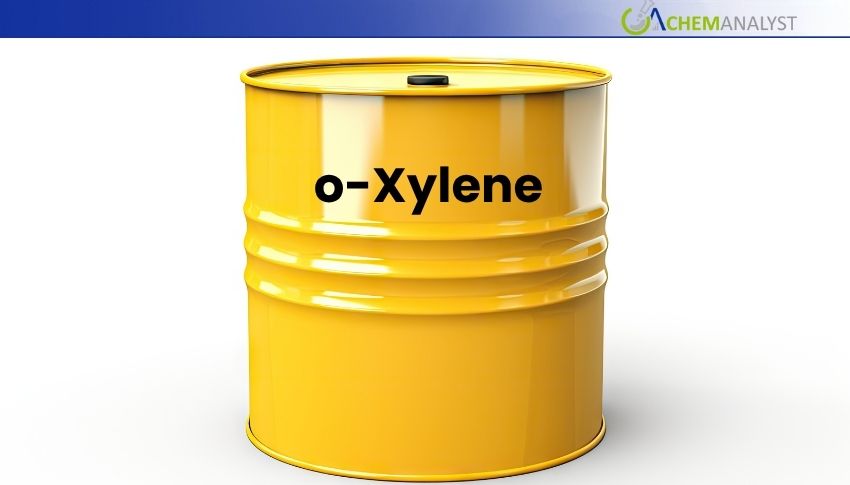Welcome To ChemAnalyst

In July 2025, o-Xylene prices moved higher in the USA during the first half of the month, as strong demand in Latin America and a tight domestic supply persisted. Prices fell in the fourth week of July as export interest weakened, and inventories remained steady. By contrast, prices in Germany remained steady in July while imports from South Korea remained consistent, downstream demand remained constant, and domestic inventories remained balanced, even with higher feedstock and freight costs.
In July 2025, o-Xylene prices in the USA exhibited volatility while prices in Germany remained steady, demonstrating the underlying differences in supply-demand balance and cost structures.
In the USA, o-Xylene prices increased in early July, propelled by solid demand from Latin America (in particular, Mexico and Chile). Early in July, feedstock naphtha prices fell sharply - down 7.6% - but tight domestic supplies and robust demand from phthalic anhydride (PA) and plasticizer producers kept prices buoyant. As a result, prices rose 3.3% in the first week and increased a further 1.1% the following week in conjunction with a modest rebound in feedstock prices. Steady production with normal export loads from Gulf Coast terminals added to the pricing trends.
However, by the fourth week, market sentiment shifted. O-Xylene prices fell as much as 2.13% in the fourth week on an international demand slump and lacklustre domestic demand from resin and plasticizer consumers. Overall sufficient o-xylene inventories in Mexico and Chile saw reduced purchasing, with no major drawdown on current availability, which further weakened FOB Texas offers despite steady production and decent inventories.
On a different note, o-Xylene prices in Germany remained stable for the duration of July with CFR Hamburg pricing not showing any variation even after four weeks. This was despite an increase of 2.8% in naphtha prices in week 2. Prices were largely insulated based on balanced supply from South Korea, the main supplier, and steady domestic consumption. Imports arrived as expected at ports such as Hamburg and Rotterdam in good time, which provided sufficient stock levels.
There was stable downstream o-Xylene demand for PA and plasticizer applications, particularly for construction which has for some while deemed to be less than supportive for any continued interest on price lifts. Even though there was an increase of 2% over freight between Asia and Northern Europe towards the end of July, as import prices of o-xylene were affected both by port congestion and seasonal cargo pressure, local o-Xylene price was entirely unaffected overall, mainly due to well-stocked onshore resources and intra-European routing providing insulation from the volatility of international logistics.
Overall, while the U.S. o-xylene market shows a brief episode of bullishness followed by a price correction due to fading export interest, the German market was generally range-bound through the month. The different movements demonstrate how international trades, volatility in domestic feedstock availability and general downstream demand conditions can change o-Xylene price movements globally.
Looking ahead for the month of August, it is expected that o-xylene price sensitivity will remain in the U.S., but German prices will remain stable unless there are significant supply disruptions or shocking demand.
We use cookies to deliver the best possible experience on our website. To learn more, visit our Privacy Policy. By continuing to use this site or by closing this box, you consent to our use of cookies. More info.
